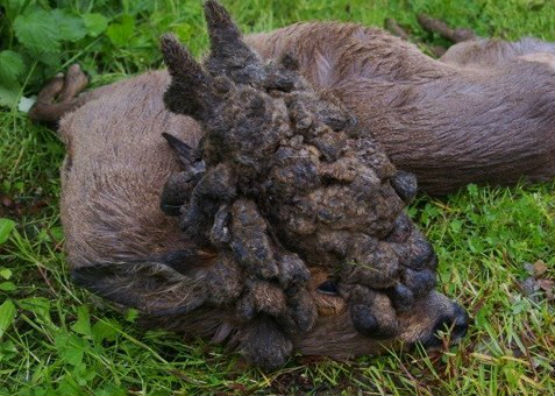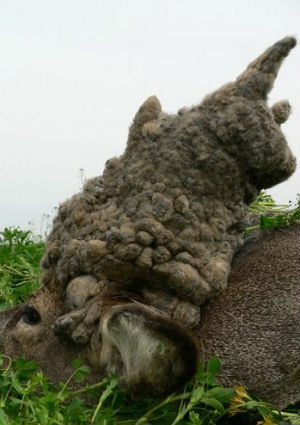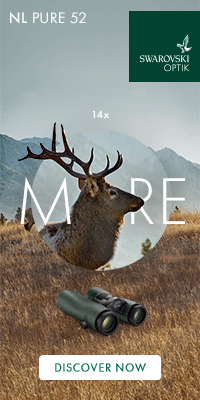With the UK’s Roebuck now in velvet Toby Worthington looks more closely at this stage of antler growth and the development of the ‘Perruque’ and ‘Mossed head’.

(Above: A Perruque-head grows rapidly in the later stages)
As most will know, male deer grow antlers every year, during the early stages of antler development the antlers are soft and covered in fine velvety hair referred to as ‘velvet’. In fact this velvet tissue is the means by which nutrients are carried to the antler in order to promote growth. If allowed to develop further the antler hardens and calcifies into the sharp bony structures known as antlers which the deer use as weapons. Deer antlers in velvet grow surprisingly fast and can develop up to 20mm each day. This process of annual regeneration is unique to deer and in humans might be the equivalent to growing an arm every year!
However on occasion, during the antler growing process, things can go wrong and it is from these incidents that many of the years malformed heads appear.
 Antlers in velvet are more flexible than fully developed antlers, however, half-fractures during the growing phase can result in some rare and bizarre trophies that are often highly sought after, especially by those trophy hunters from the continent who will often be prepared to spend strong money for a rare and unusual Roebuck trophy.
Antlers in velvet are more flexible than fully developed antlers, however, half-fractures during the growing phase can result in some rare and bizarre trophies that are often highly sought after, especially by those trophy hunters from the continent who will often be prepared to spend strong money for a rare and unusual Roebuck trophy.
(The Perruque head can be described as both the ultimate cull buck and the ultimate trophy)
However, the most significant effect on antler growth comes about through the interruption, even temporary interruption, of the hormonal balance. If the supply of male hormone is cut off temporarily the antler will take longer to harden and will probably show exaggerated pearling as a result of the extended growing period. These type of heads are referred to as ‘Mossed Heads’ and in such examples the antler will eventually harden, albeit in a malformed and unusual manner.
What is more rare is the situation in which the male hormone testosterone is cut off completely, as might be explained through accidental castration whilst crossing a barbed wire fence, or involvement in a collision with a car. Incidences resulting in a lack of testosterone are not always so easily explained and may also develop as a result of rare internal anomalies in the deer’s physiology.
Whatever the cause, the effect will be a continuous growth of the antler in the velvet stage that increases rapidly with time, and gives the effect of a mass of velvety tissue on the head that has the appearance of a wig also known as a ‘Perruque’.
Sadly the wig, or perruque will in almost all incidences, eventually be responsible for the buck's demise, as it grows rapidly in the later stages and will either become fly blown and infected or blind the animal as it gradually obscures the eyes. Perruque’s are extremely rare and because of their effect on the animal, bucks suffering from this condition can rightly be described as both the ultimate cull buck and the ultimate trophy.

If you'd like to try for a Roebuck this season then why not book a stalk through 'County Deer Stalking', follow this link for more: go-stalking
To read more from Toby follow this link:chronic-wasting-disease-in-deer



















